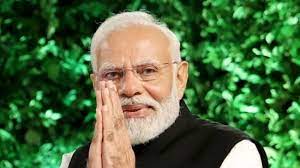New Delhi:Unity in diversity is one of the most spectacular features of the population of India. India has the second-largest tribal population in the world. As per the Census 2011, the tribal population constitutes about 8.9% of the total population in India. The tribal people throughout the country have rich traditions, cultures and heritage with unique lifestyles and customs.Tribal movements like the Khasi-Garo movement, Mizo movement, Kol movement, etc. are integral chapters in India’s history and struggle for independence. Be it the bravery of Gond Maharani Veer Durgavati or the sacrifice of Rani Kamalapati; the country cannot forget the same. The struggle of Veer Maharana Pratap cannot be imagined without the brave Bhils who fought shoulder to shoulder and made sacrifices. There are many Adivasi heroes who have sacrificed their lives in the struggle for the country’s freedom.

Commemorating the sacrifice of Tribal freedom fighters and marking their legacy, the Union Government decided to observe the birth anniversary of one of the great Freedom Fighters, Bhagwan Birsa Munda, as Janjatiya Gaurav Divas with effect from November 15, 2021. For the first time in the country after Independence, the art and culture of the tribal society and their contribution to the freedom movement and nation-building are being remembered with pride, and they are being honoured on such a grand scale.This declaration acknowledges the glorious history of tribal communities and recognizes their efforts towards the preservation of cultural heritage. Moreover, PM Narendra Modi will visit Jharkhand on 14th-15th November 2023 on the occasion of Janjatiya Gaurav Diwas. He will be the first PM to visit Ulihatu Village, the birthplace of Bhagwan Birsa Munda. Furthermore, the Prime Minister will launch thePradhan Mantri PVTG Development Mission, with a budget of around Rs 24,000 crore. The Mission will be implemented through the convergence of 11 interventions of 9 Ministries.There are 75 PVTGs across 18 States & UTs who are living in 22,544 villages (220 districts) with a population of around 28 lakhs. These tribes stay in scattered, remote & inaccessible habitations, often in forest areas and hence a mission is planned to saturate PVTG families and habitations with basic facilities such as road and telecom connectivity, electricity, safe housing, clean drinking water and sanitation, improved access to education, health and nutrition and sustainable livelihood opportunities. Recognizing the need to protect the socio-cultural fabric of tribal communities and underscoring their role in nation-building, the makers of the Constitution of India made special provisions for the protection of tribal culture and the development of Scheduled Tribes. These include the conservation of their language, script and other cultural elements, ensuring their educational interests, providing economic safeguards and taking steps for political empowerment.Eklavya Model Residential Schools (EMRS)have been set up to provide quality education to ST students (Class VI-XII) in remote areas through residential schooling facilities. Presently, more than 1.2 lakh studentsare enrolled in 401 EMRS. It is noteworthy to know that the number of female students (60,815) in EMRSs exceeds that of male students (59,255). Moreover, a total of 38,000 teachers and support staff are being recruited for the Ekalavya Model Residential Schools which will benefit 3.5 lakh tribal students. A number of Fellowship and Scholarship Programmes have also been launched to provide financial assistance to ST students for studies ranging from pre-matric and post-matric levels to the pursuit of higher education and studies abroad. Notably, during the last nine years, a total of 3.15 Crore tribal students have received scholarships/fellowships of over Rs. 17,087 Crore (from April 2014 till September 2023).Prioritizing the welfare of tribal communities, the budget allocation of the Ministry of Tribal Affairs has been substantially increased from Rs.4295.94 crore in 2013-14 to Rs.12461.88 crore in 2023-24 i.e., an increase of around 190.01%.Funds are released to States under Article 275(1) of the Constitution to enable them to meet the cost of such schemes of development as may be undertaken by the State for the purpose of promoting tribal welfare. Under the Pradhan Mantri Vanbandhu Vikas Yojana, a venture capital fund has been set up to promote entrepreneurship/start-up projects by ST youth. Minimum Support Price (MSP) is ensured for Minor Forest Produce, and marketing support for tribal products is provided through the Pradhan Mantri Jan Jatiya Vikas Mission. Under this mission, the total number of Van Dhan Vikas Kendra (VDVK) sanctioned is 3958 while an amount of Rs. 398.49 crore has been disbursed. A total number of 183412 tribal persons is associated with this scheme.
In addition, financial aid is provided to Voluntary Organizations working for the welfare of Scheduled Tribes for projects in education, health and livelihood.
TRIFED, (Tribal Cooperative Marketing Development Federation of India) supports retail marketing for livelihood development among tribal communities of India. A provision of Rs. 288 crores has also been made in the annual budget estimate for the fiscal year 2023-24 to be implemented through TRIFED, specifically through the formation of Self-Help Groups and producer enterprises. The Pradhan Mantri Adi Adarsh Gram Yojana (PMAAGY)aims to provide basic infrastructure in villages with a significant tribal population. Under the scheme, 36428 villages having 50% tribal population and 500 Scheduled Tribes (STs) have been identified for providing basic infrastructure facilities in these villages, which includes villages in the Aspirational Districts identified by NITI Aayog. Out of the total Aspirational Districts, 86 Districts are common wherein 10509 villages are covered under PMAAGY.
